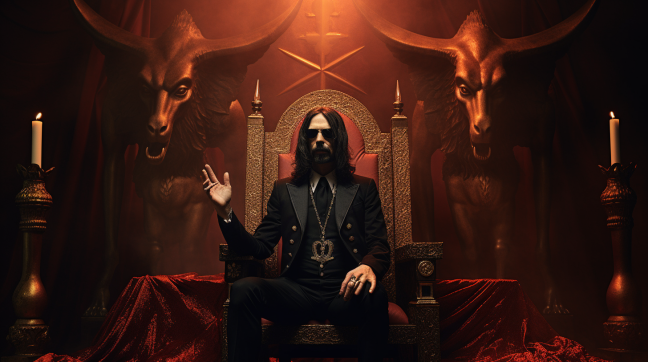The Church of Satan is a religious organization founded in 1966 by Anton Szandor LaVey in San Francisco, California. It is dedicated to the philosophy and teachings of LaVeyan Satanism, which is captured in LaVey’s “The Satanic Bible.” Unlike some preconceived notions about Satanism, the Church of Satan does not believe in or worship an actual deity called Satan but instead uses the figure of Satan as a symbol of individualism, freedom, and personal empowerment.
Philosophical Foundations
LaVeyan Satanism is primarily atheistic, viewing Satan not as a literal god or being but as an emblem of certain human traits that members of the Church embrace. This philosophy celebrates individualism, hedonism, and personal empowerment. It encourages skepticism, critical thinking, and self-indulgence within the bounds of the law and personal responsibility.
The Nine Satanic Statements, found in “The Satanic Bible,” succinctly encapsulate the core beliefs of the Church. These statements emphasize ego, self-interest, pragmatism, and a rejection of self-deceit.
Rituals and Symbolism
Members of the Church of Satan practice ritual magic, which is understood as psychodramatic ceremonies meant to release emotional or psychological energy. These rituals, rather than being supernatural, are theatrical expressions and affirmations of the individual’s beliefs and emotions.
The Sigil of Baphomet, an inverted pentacle containing a goat’s head, is the Church’s primary symbol. It represents the carnal nature of humanity and the earthly, rather than spiritual, realm.
Evolution and Splinter Groups
Since its inception, the Church of Satan has seen numerous changes, both in leadership and philosophy. After LaVey’s death in 1997, leadership was taken over by Peter H. Gilmore. Under his direction, the Church has maintained its foundational beliefs while adapting to contemporary challenges.
However, the Church’s existence and its portrayal of Satanism have led to the formation of various splinter groups and other Satanic organizations that differ in beliefs, practices, and interpretations of Satanism.
Reception and Controversies
The Church of Satan has faced considerable scrutiny and controversy. The public’s often sensationalized understanding of Satanism, fueled in part by the “Satanic Panic” of the 1980s and 1990s, has led to misconceptions about the Church’s beliefs and practices. In reality, the Church of Satan does not condone illegal activities and emphasizes personal responsibility.
In his book “The Satanic Bible,” LaVey addresses these misconceptions, stating, “Satanists are encouraged to indulge in the seven deadly sins, as they hurt no one; they were invented by the Christian Church to ensure guilt on the part of its followers.”
The Church of Satan, representing LaVeyan Satanism, is a unique blend of philosophy, theatrical ritual, and iconoclastic beliefs. It challenges traditional religious and moral conventions, prompting its adherents to question societal norms and celebrate their individualism. While often misunderstood, the Church provides a distinctive framework for self-exploration and personal empowerment for its members, emphasizing earthly existence, rational self-interest, and individual will.
